Chris & Allyson vs. Italy & Croatia (June-July 2019)
Croatia Day One: Arrival in Dubrovnik, exploring Old Town
Croatia is a land of stunning beauty and profound history. Its islands, rocky shores and highlands witnessed the rise and fall of the Roman Empire. Its people mastered the seas and wrestled the mighty Venetians. It was a playground for the Habsburgs, a dreamscape in the Communist nightmare, and -- in my lifetime -- a crucible for ethnic strife.
It's also a bit smaller than West Virginia, so you can totally knock it out in a week. Get on it.
Why Croatia? Neither of us has Croatian heritage, or any academic interest in the country. But we're worldly people with sophisticated habits. Allyson watched a season of "Below Deck: Mediterranean," in which a barely lucid yacht crew squired rich jerks around Croatia's coast. Also, we heard that "Game of Thrones" filmed there a bunch. What more reason do you need? We woke up in Rome at 6 a.m. to catch a flight.
Croatia has a boomerang shape, wrapped around Bosnia. In the far south it hugs the Adriatic Sea and is barely wide enough to qualify as a country. It widens out as you move north along the coast, then hooks to the right and heads inland. If you want to see it all, but don't want to go through Bosnia -- and let's be honest, Bosnia has some terrible branding -- then you have to choose a starting point and make your way around the boomerang.
We chose Dubrovnik, mainly because the flight from Rome was astonishingly cheap.
But as a bonus, Dubrovnik is amazing! It may be the world's best-preserved Medieval walled city, having survived centuries of armed conflict and also the withering attention of the cruise industry. The guts of Dubrovnik have been modernized -- we can testify first-hand that they have indoor plumbing and everything -- but the city has gone to astonishing lengths to preserve its historic facade. They want the tourism, they need the tourism, and they love the tourism. We're not ashamed of being tourists, so it was a match made in heaven.
We landed at a tiny airport wedged at the southern tip of Croatia, picked up a light-gray Mercedes hatchback from the rental lot, and headed out. For an American, Croatia is a very easy country to navigate. The Croats drive on the right, there are very few multi-lane highways, and the existence of satellite navigation means that incomprehensible road signs are a mere nuisance. Getting around the countryside is a breeze, and if you can find a parking garage in the not-so-overwhelming cities, the rest is pretty easy. On a two-lane road, locals will pass you constantly, but if you choose not to take that as an affront to your manhood or the greatness of America, then driving is a very low-stress activity.
Naturally, we white-knuckled it along the coast road, on a direct course to Dubrovnik. Unless your car is amphibious, you don't have the option of an indirect course. As previously mentioned, southern Dalmatia is a narrow strip of land, where cities and towns are built on the side of hill descending straight into the sea. If you go uphill and past the ridge line, you're in Bosnia -- which is a lovely country, but one one that hasn't gotten over the PR hump. After a few minutes, a bunch of switchbacks took us closer to the water. And then we didn't drive triumphantly into the old town!
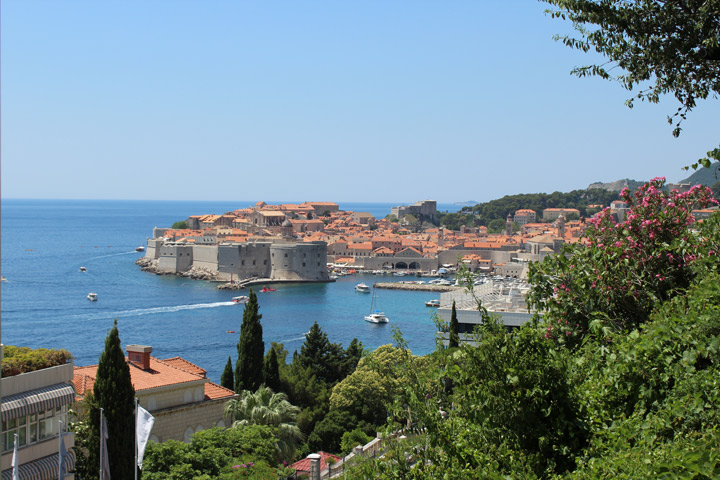
The view of Old Town from our very nice hotel.

Inside the walls of Dubrovnik.
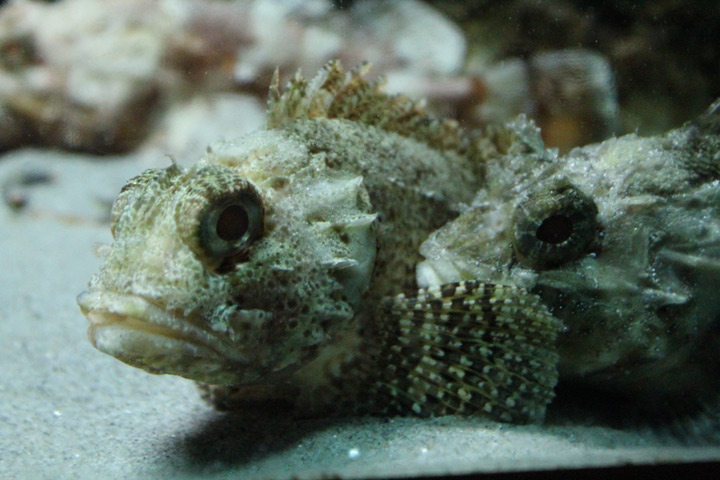
A fish takes five at the Dubrovnik aquarium.
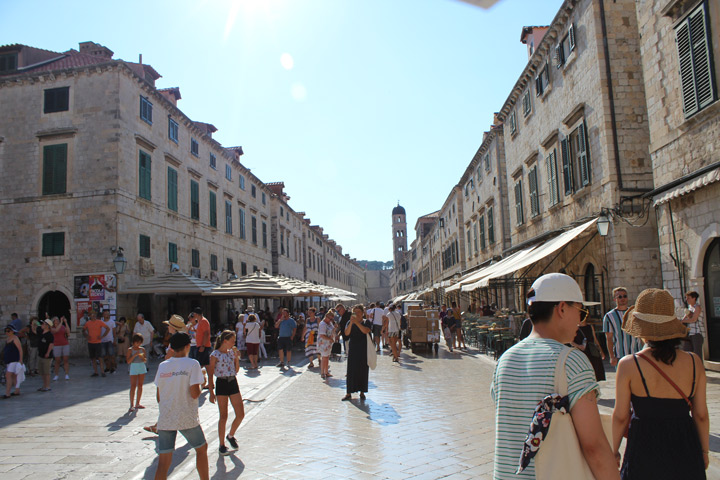
The Stradun, the main drag of Old Town Dubrovnik.
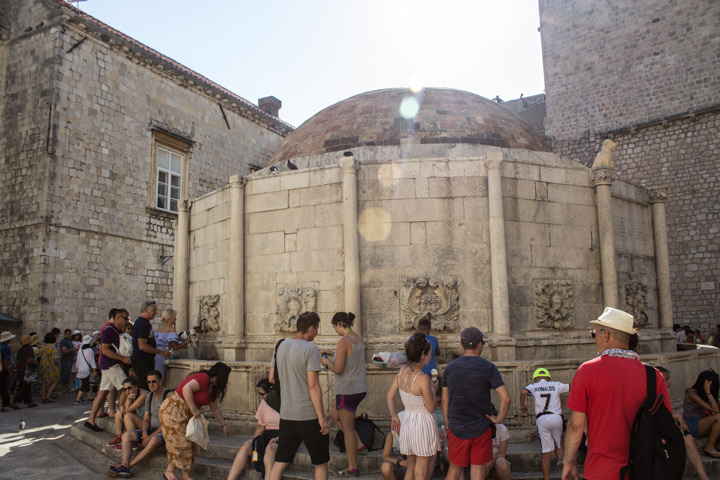
The Big Fountain of Onofrio.
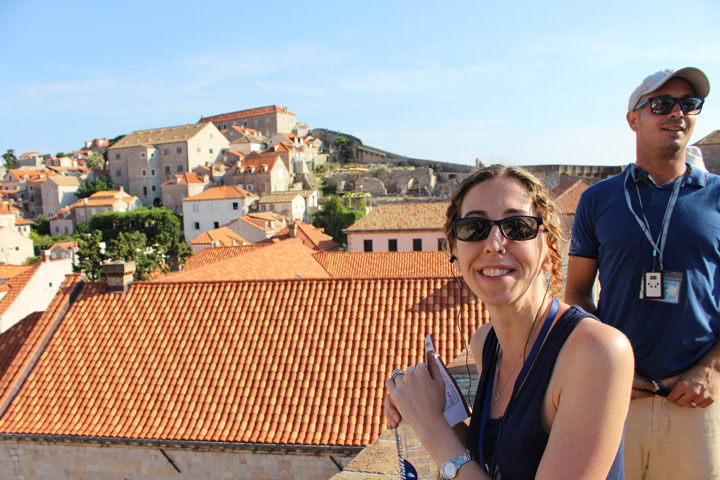
Walking the city walls with superguide Marco.
In fact, driving into the old town would be a crime against humanity, since you'd be sullying a crown jewel of cultural heritage, and also plowing through dense crowds of cruise ship passengers. Instead we found our hotel, about half a mile south. The Villa Glavic was a modest series of apartments partnered with the Hotel Argentina -- a vacation hot spot right across the street. The hotel and resort has a bunch of patios, tunnels cut into the cliffside and a "private" bathing area on the sea. (In Croatia, the beaches are public, but they let private businesses control some of the access points. You can technically swim wherever you want, but you might have to tiptoe past a bunch of hotel guests to get there.) We theoretically had full use of the Argentina's facilities, but we really only used it for meals -- it looked nice, but the clientele was old people and families. And we are middle aged, goddamit.
We checked out the hotel beach (all rocks), had lunch at the pool deck restaurant and moved out. Dubrovnik had waited centuries for our arrival. Delaying would be rude.
The walk to town takes you past one big beach, where they bought in actual sand to replace the indigenous rocks. It also takes you past some low-slung buildings that used to be the quarantine facilities for one of the Adriatic's most hopping ports. They used to house potentially diseased travelers; now they souvenir shops and art galleries. Life finds a way.
Our first step was to stop at a tourism office outside the city gate and buy tickets for a late-afternoon walking tour. Then we had a few hours to explore and transform ourselves into the people who would ask semi-informed, highly annoying questions on that walking tour. It was a zillion degrees out, but we knew we could do it.
There's no need to be cute about it: Dubrovnik is stunning. It's a Medieval walled city, jutting into the Adriatic. Parts have been updated or rebuilt over the years -- for example, they had to spruce things up a bit after the Croatian Homeland War in the '90s -- but to the casual eye everything looks authentic.
Many of the worn stones that make up the streets are originals, buffed to a shine by years of foot traffic. There's one main drag, a bunch of side streets and plenty of narrow, twisting alleys; if you get lost in the moment you can easily imagine getting stabbed by a diseased 14th-century street urchin. The town is bowl-shaped, with the lowest ground in the center.
And then there's the wall. You can't have a respectable Medieval city without a great wall. Walls keep invaders out, and if things go really bad with the peasantry, they're also a nice way to keep the rich people in.
The fortifications of "old town" evolved over the years, but at this point it's entirely enclosed. At some spots, if you're at ground level, the wall towers dozens of feet above you. It makes the city feel like a maze, although you can't really get lost, because if you walk a few minutes in any direction, you run into the wall. So it's a great metaphor for life, too!
We got a jump on our tour by checking out the Fort of St. John, a big fortification built into the wall. Once it served as the anchor to the mighty harbor chain. Now it houses a mighty maritime museum and a somewhat-robust-for-its-size aquarium.
I wanted the history first. Dubrovnik was the property of the Byzantine Empire, then the Venetian Republic. It shook free of oppressive overlords in 1382 to become the Republic of Ragusa.
The Ragusans were proud, saucy people; rather than reinvent themselves as conquerors, they figured out what the people of their town did best. They were traders good at making money. And in their wisdom, they used that money to lease their continued independence. They cut side deals with military powers, they bluffed, they cajoled, they played bigger neighbors against each other. The Ragusans developed hybrid galleys with some fighting capacity -- they had some pretty cool boat models in the museum -- but they survived through cunning and guile.
The fact that their maritime museum is only two rooms, however, is a pretty good indication that cunning and guile only get you so far. Studying the glazed expression on Allyson's face, Ieased my continued independence and cunningly cut a side deal, whereby we could go get some coffee and then maybe look at fish.
Naturally, the aquarium was far better than the museum. It used the stone fort's natural cooling properties and water coming out of the Adriatic to showcase some of the sea critters that lonely Ragusan sailors might have eaten, or attempted to mate with. There was locally made fish-themed art strewn about the place, and we got a chuckle out of the number of living fish that were laying down on the job. Just sitting on the bottom of the tank, not swimming. Fish, you have ONE job.
And all this brought us to tour time. We met at the Big Fountain of Onofrio, which sounds like a magic item in "Dungeons & Dragons" but was actually the old town's main watering hole. It was designed in the 1440s to bring fresh water from the Dubrovnik River, and as of 2019 you could still use it to fill up your water bottle without fear of getting sick. For reference, the plumbing in our condo is getting iffy after 12 years.
The agenda on this brutally hot day was to walk the top of the city wall and find out anything interesting about Dubrovnik. Our excellent guide was Bruno, a young, handsome guy who grew up in Dubrovnik and now lived nearby. (It's not cheap to live inside the walls these days.) He was 6 during Homeland War, when the Serbians shelled the city in 1991 and 1992.
And he covered everything: Medieval history, modern history, culture, beach recommendations, and most important (to many tourists) the "Game of Thrones" shooting locations. Dubrovnik was the stand-in for Kings Landing, and Croatia, at the time of our visit, was squeezing every last goddam bit of blood out of that stone. The highlights:
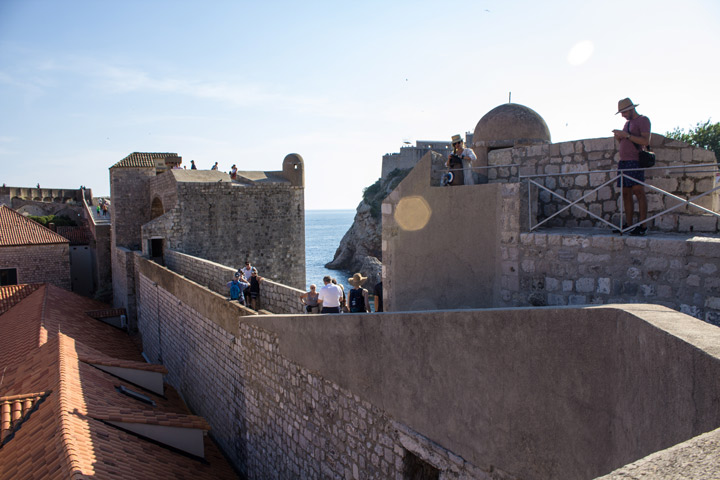
Walking the walls of Old Town on a 100-degree day.

The Red Keep from "Game of Thrones," only for realz.
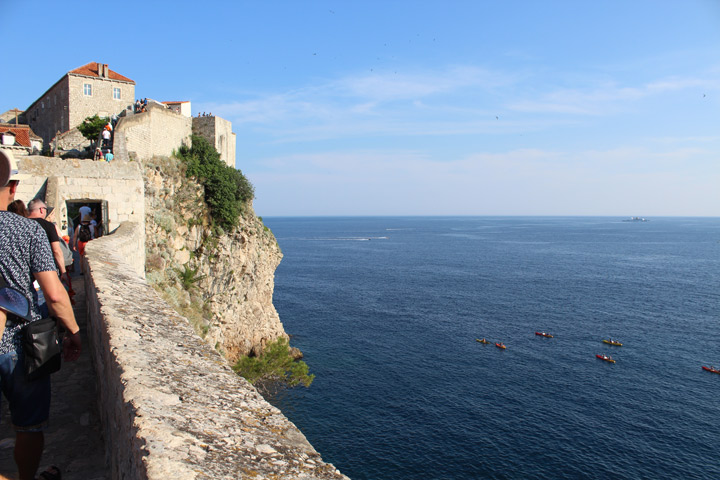
Yakkers in the Adriatic, seen from the walls of Old Town
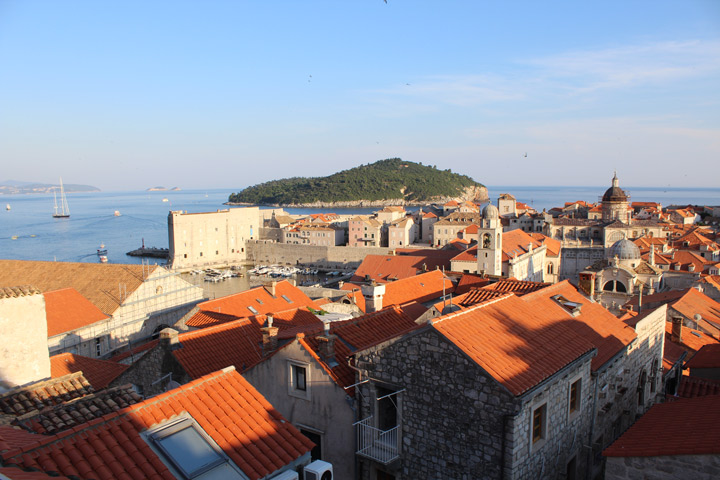
The famous orange roofs of Dubrovnik, with the island of Lokrum in the background.
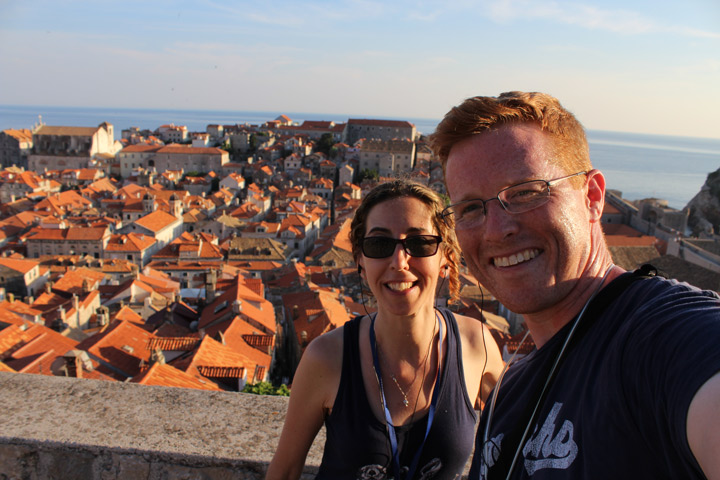
Do sweat the details!
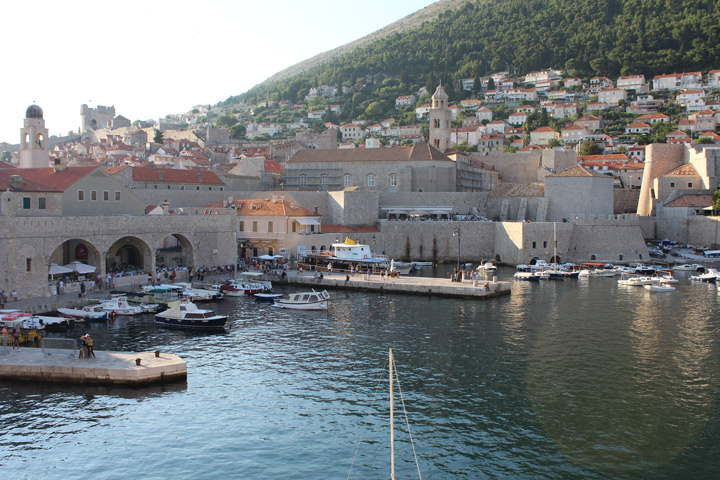
A shot of the Dubrovnik harbor. Check out the steep coastline.
Game of Thrones: Bruno pointed out the "walk of shame" steps and noted that nearby Fort Lovrijenac, just outside the walls on a high bluff, was the Red Keep. We also walked past the former granary that was Littlefinger's brothel. If you get all these reference, congrats, you watched a mediocre TV show.
Ragusa: The Ragusans always had a tenuous hold on power, but they treasured their freedom and were willing to pay for it. They bribed the Ottomans to stay out of their business, and allowed them a little spit of land touching the coast to avoid having a border with the Venetian Republic. Officials sent to pay the bribe were imprisoned for a year, as collateral, until the next bribe was sent. Reliant on mercenaries and always eager to avoid armed conflict, the Ragusans traded in information and tried to balance their stronger opponents against each other.
The Homeland War: Bruno pointed out the fort at the top of Mount Srd, which is the vowel-free and very generous name of the ridgeline overlooking Dubrovnik. It was instrumental in defense of the city, as the Serbs were lobbing shells from both the mountains beyond Mount Srd and ships off the coast. The garrison at Mount Srd successfully defended the city from capture, but they couldn't stop all the shelling -- as we looked out at the iconic orange tile roofs of the city, Bruno pointed out the spots where some were a different shade of orange. Those were the replacements for ancient tiles destroyed by explosions. (As a fun side note, the roof tiles are all roughly the same time because they were molded on people's quads.)
Tourism: As we cut our way through lots of other tour groups, Bruno kept it real. He had real concerns that the city's reliance on tourism was unhealthy, and that it was reaching the limits of its existing infrastructure. Rents were too high, the ancient roads weren't built for modern traffic volumes, etc. Bruno said the key to doing anything in the old town was money: there are rules to limit how much you can modify historic structures, but people with a lot of cash seemed to circumvent those rules regularly.
And there was more! Bruno told us a little about the Franciscan and Dominican monasteries that were so essential to the town. He warned us about the feral cats, who eat well behind the city's restaurants and often team up to attack small dogs. We heard about the 1667 earthquake, and how some Croatians are still expected the next Big One and any moment. Looking out to the sea, he pointed out a water polo court and told us how Croats have an affinity for sports no one else really plays. As swifts darted through the late-afternoon air, Bruno said we should thank them for keeping the mosquitoes away.
This was a great tour, with copious amounts of sweat. In Jaffe-White tradition, we managed to hog the tour guide and get a lot of nice photos. We were also starving, so we had a subpar dinner at a restaurant just off the Stradun (the main drag). We attempted to have a drink at a literal "hole in the wall" bar -- it's on the outside of the walls, and you have to hunt for the entrance -- but the sun was already down and a pitch-black Adriatic doesn't make for great scenery. The Hotel Argentina bar wasn't exactly jumping either, so we called it a sort-of-early night. Thursday was ahead! And with it, adventure! And catastrophic toe injuries!
